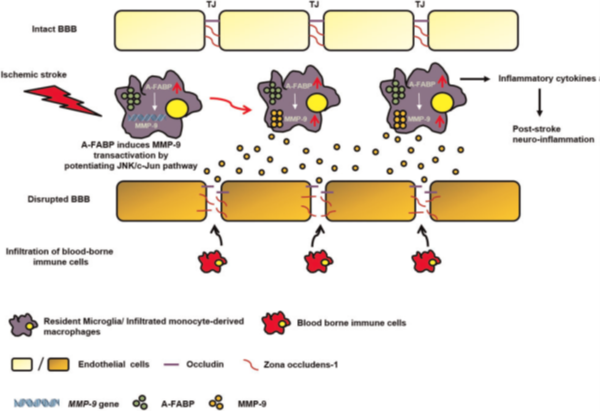Professor Ruby L.C. HOO 何麗莊
Biography
Professor Ruby L.C. Hoo obtained her Bachelor, MPhil and PhD in biological science at The University of Hong Kong. She received her post-doctoral training at division of endocrinology, Department of Medicine at The University of Hong Kong. She took up her post as Research Assistant Professor and Assistant Professor in 2006 and 2017 respectively at Department of Medicine, HKU. She joined the Department of Pharmacology and Pharmacy, HKU, in Feb 2018. She is the principal investigator of research projects funded by Research Grants Council, Innovation and Technology Commission, Human Medical Research Fund, National Natural Science Foundation of China and Guangdong / Shenzhen Basic research fund.
Memberships & Editorships
Memberships:- Co-Investigator, State Key Laboratory of Pharmaceutical Biotechnology
- Member, Research Centre of Heart, Brain, Hormone and Healthy Aging
- Member, HKU Shenzhen Institute of Research and Innovation (HKU-SIRI)
- Ordinary, Hong Kong Society of Endocrinology, Metabolism and Reproduction
- Associate member, Hong Kong Association for the study of obesity
Editorships:
- Editorial Board Member of European Journal of Pharmacology
- Editor of Frontiers in Endocrinology
- Editor of Scientific Reports
Honours and Awards
- Faculty outstanding research output award 2020-2021. Faculty of Medicine, The University of Hong Kong (P.I)
- Faculty outstanding research output award 2019-2020. Faculty of Medicine, The University of Hong Kong (Co-author)
- Excellent presentation award, 2019 International Congress on Obesity and Metabolic Syndrome & Asia-Oceania Conference on Obesity, Korea
- Travel Grant Award, 2019 International Congress on Obesity and Metabolic Syndrome & Asia-Oceania Conference on Obesity, Korea
- Travel Grant Award, 2016 International Congress on Obesity and Metabolic Syndrome in Conjunction with 45th Annual Scientific Meeting of KSSO
- Best oral presentation award, 11th International Symposium on Healthy Aging HKU, 2016
- Best oral presentation award, Medical Research Conference, HKU, 2013
- Best oral presentation award, International Huaxia Congress of Endocrinology, 2012
- Best oral presentation award, Medical Research Conference HKU, 2006
Research Interests
My research interests include the basic and translational research on adipose tissue biology, obesity and its related cardiometabolic diseases. She focuses on deciphering the roles and underlying mechanisms of adipocyte or liver-derived hormones such as adiponectin, fibroblast growth factor-1 (FGF21) and especially adipocyte fatty acid binding protein (A-FABP) in the regulation of energy metabolism and in the pathogenesis of obesity-related cardio-metabolic diseases.
We demonstrated that adiponectin mediates the suppressive effect of the anti-diabetic drug rosiglitazone on plasminogen activator inhibitor-1 production (Hoo RL, 2007; ATVB) and growth hormone could induce the hepatic production of FGF21 via a lipolysis-dependent mechanism in adipocytes (Hoo RL, 2011; J Biol Chem). We also discovered that pharmacological inhibition of A-FABP can significantly alleviate the development of both acute liver injury and non-alcoholic fatty liver disease in mice and A-FABP mediates these diseases by enhancing inflammation in Kupffer cells (Hoo RL, 2013; J Hepatol.). A-FABP is also a mediator of myocardial ischemia/reperfusion injury and diabetes-induced cardiac dysfunction through its suppression on eNOS/NO pathway and induction of superoxide anion production (Hoo RL, 2015; Clin Sci). We showed that A-FABP potentiates toxic lipids-induced endoplasmic reticulum and inflammation in macrophages via inhibition of Janus Kinase 2-dependent autophagy (Hoo RL, 2017; Sci Rep). We also discovered the physiological role of A-FABP in energy metabolism which regulates adaptive thermogenesis through promoting the intracellular conversion of thyroid hormone T4 to T3 in brown adipocytes (Hoo RL & Shu L, 2017 Nat Commun). The study results implicated that global pharmacological inhibition of A-FABP may not be an optimal therapeutic strategy for obesity-related cardiovascular and metabolic diseases due to the potential impairment of adaptive thermogenesis. Our team also showed that A-FABP exacerbates ischaemia stroke by inducing the expression of MMP-9 in peripheral macrophages and microglia thus promotes blood-brain barrier disruption (Liao et al., 2020; European Heart Journal). Based on this, we collaborated with Shenzhen institute of advanced technology and developed and characterized a neutralizing monoclonal antibody against A-FABP for treating ischemic stroke (Liao et al., 2023; British Journal of Pharmacology; CN, EU and US patents filed). Our team further showed that A-FABP is a key regulator of the onset and progression of liver fibrosis by mediating the crosstalk between liver sinusoidal endothelial cells and hepatic stellate cells (Wu et al., 2021; Advanced Science) and discovered the memory T cells are critical mediators in adaptive immune activation in Type 1 diabetes and A-FABP is essential for their survival and alarming function (Wu et al., 2024; Advanced Science). Recently, we discovered the mitochondrial protein Chchd10 as a metabolic sensor controlling adipose tissue homeostasis (Wu and Zhang et al., 2025; Advanced Science) Her team is currently exploring new factors such as Sdc4, NE/PR3 and mitochondrial protein Chchd10 as therapeutic targets for the treatment of obesity-related cardiometabolic diseases.

Figure 1: A-FABP mediates BBB disruption and exaggerates ischaemic stroke outcome. In response to ischaemic stroke, the expression of A-FABP is upregulated in peripheral blood monocytes (which further infiltrate in the brain and transform into macrophages) and microglia contributing to the elevation of both circulating and cerebral A-FABP levels. The elevated presence of A-FABP enhances the transactivation of MMP-9 by potentiating JNK activity thus increasing the binding of phosphorylated c-Jun to the AP-1 sites on the MMP-9 promoter. Increased MMP-9 expression and activity further degrade the TJ proteins resulting in BBB disruption which allows the infiltration of blood-borne immune cells thus exacerbates cerebral ischaemic injury. Increased A-FABP in the monocytes-derived macrophages also enhances the expression of pro-inflammatory cytokines contributing to the post-stroke neuro-inflammation. (Liao et al., European Heart Journal, 2020)

Figure 2: Summary of the effect of Chchd10 reduction in adipocytes in response to excess energy intake. In response to excess energy intake with high glucose and fatty acid levels, Chchd10 expression is rapidly and persistently reduced in white adipocytes. In short term, reduction of Chchd10 enhances adipogenesis predominantly in subcutaneous adipose tissue (SAT) to potentiate lipid storage, thus accommodating the excess energy intake. In the long term, Chchd10 reduction helps maintain the normal function of adipocytes, mainly in visceral adipose tissue (VAT), by promoting 4-HNE clearance. Mechanistically, reduction of Chchd10 promotes TDP43 expression, stabilizing Raptor mRNA thus promoting Raptor protein synthesis. Increased Raptor promotes the localization of the mTORC1 complex on the lysosome and enhances the mTORC1-mediated phosphorylation of p62. p-p62 potentiates Keap1 degradation and enhances the dissociation of the Keap1-NRF2 complex. Increased free NRF2 enters the nucleus. On one hand, NRF2 promotes the activity of PPARγ and CEBPα, thus promoting adipogenesis. On the other hand, NRF2 itself upregulates the expression of the antioxidative enzyme GSTA4. When faced with lipid peroxidation, enhanced GSTA4 catalyzes the GSH-mediated 4-HNE clearance, preventing the 4-HNE-mediated protein carbonylation, thereby protecting adipocyte function. Overall, reduction of Chchd10 enhances adipogenesis and the anti-oxidant capacity of adipocytes by activating the TDP43/Raptor/p62/Keap1/NRF2 axis, which modulates WAT remodeling and maintains WAT homeostasis in response to excess energy intake. (Wu, Zhang et al., 2025; Advanced Science)
Publications
Selected publications in recent years
- Wu X, Zhang Z, Li J, Zong J, Yuan L, Shu L, Cheong LY, Huang X, Jiang M, Ping Z, Xu A, Hoo RL*. Chchd10: A Novel Metabolic Sensor Modulating Adipose Tissue Homeostasis. 2025 Advanced Science https://doi.org/10.1002/advs.202408763 (IF:14.2)
- Huang X, Wei P, Fang Cheng, Yu M, Yang S, Qiu L, Wang Y, Xu A, Hoo RLC, Chang J. Compromised endothelial Wnt/β-catenin signaling mediates the blood-brain barrier disruption and leads to neuroinflammation in endotoxemia 2024 19;21(1):265. doi: 10.1186/s12974-024-03261-x J Neuroinflammation (I.F. 9.3)
- Wu X, Cheong LY, Yuan L, Jin L, Zhang Z, Xiao Y, Zhou Z, Xu A, *Hoo RL, *Shu L. Islet Resident Memory T Lymphocytes Orchestrate the immunopathogenesis of Type 1 Diabetes through the FABP4-CXCL10 axis. 2024. https://doi.org/10.1002/advs.202308461 Advanced Science (IF: 17.521)
- Yang S, Xu D, Zhang D, Huang X, Li S, Wang Y, Lu J, Wang D, Guo ZN, Yang Y, Ye D, Wang Y, Xu A, Hoo RLC*, Chang J*. Levofloxacin alleviates blood-brain barrier disruption following cerebral ischemia and reperfusion via directly inhibiting A-FABP. Eur J Pharmacol. 2024 Jan 15;963:176275. doi: 10.1016/j.ejphar.2023.176275. (IF:5.0)
- Krishnamoorthy S, Hoo RL, Cheung CL. Plasma Proteome-wide Mendelian Randomization Analysis Reveals Biomarkers and Therapeutic Targets for different stages of COVID-19. Transboundary and Emerging Diseases 2024 (IF: 4.3)
- Liao B, Yang S, Geng L, Zong J, Zhang Z, Jiang M, Jiang X, Li S, Xu A, Chang J*, Hoo RL* Development of a therapeutic monoclonal antibody against circulating adipocyte fatty acid binding protein to treat ischemic stroke, British Journal of Pharmacology 2023 doi: 10.1111/bph.16282. (IF: 7.3). China, EU and US patents were filed for this study.
- Cheong LY, Wang B, Wang Q, Jin L, Kwok KH, Wu X, Shu L, Lin H, Chung SK, Cheng KK, Hoo RL and Xu A. 2023 Fibroblastic reticular cells in lymph node potentiate white adipose tissue beiging through neuro-immune crosstalk in male mice" Nature Communications 2023 Mar 3;14(1):1213. doi: 10.1038/s41467-023-36737-0. (IF:16.6)
- Ji Y, Gao Q, Ma Y, Wang F, Tan X, Song D, Hoo RLC, Wang Z, Ge X, Han H, Guo F, Chang J. An MMP-9 exclusive neutralizing antibody attenuates blood-brain barrier breakdown in mice with stroke and reduces stroke patient-derived MMP-9 activity. 2023 Pharmacol Res. 2023 7;190:106720. doi: 10.1016/j.phrs.2023.106720. (IF 10.33)
- Mak JHC, Lui DT, Fong CH, Cheung CY, Wong Y, Lee AC, Hoo RL, Xu A, Tan KC, Lam KS, Lee CH. Serum Thrombospondin-2 Level Changes with Liver Stiffness Improvement in Patients with Type 2 Diabetes. 2023. Clin Endocrinol (Oxf). doi: 10.1111/cen.15010. (IF:3.2)
- Krishnamoorthy S , Li GH , Ho KS , Chau YP , Mak C , Ng D , Chung AK , Chu JK , Tan KC , Hoo RL , Cheung CL. Illicit drug use is associated with lower bone mineral density and bone strength. Osteoporosis sarcopenia 2023 DOI: 10.1016/j.afos.2023.09.001 (IF: 2.5)
- Qiu, H., Song, E., Hu, Y., Li, T., Ku, K. C., Ye, D., Wang, C., Cheung, B. M. Y., Cheong, L. Y., Wang, Q., Wu, X., Hoo RL., Wang, Y., Xu, A. 2022 Hepatocyte-secreted Autotaxin Exacerbates Nonalcoholic Fatty Liver Disease Through Autocrine Inhibition of the PPARalpha/FGF21 axis. Cellular and Molecular Gastroenterology and Hepatology. 2022 doi.org/10.1016/j.jcmgh.2022.07.012 (IF 9.23)
- Wu X. Shu L, Zhang Z, Li J, Zong J, Cheong LY, Ye D, Lam K.S., Song E, Wang C, Xu A, Hoo RL*. Adipocyte fatty acid binding protein promotes the onset and progression of liver fibrosis via mediating the crosstalk between liver sinusoidal endothelial cells and hepatic stellate cells, Advanced Science 2021 April; doi.org/10.1002/advs.202003721 (IF: 17.521)
- Li HL, Wu X, Xu A, Hoo RL*. A-FABP in Metabolic Diseases and the Therapeutic Implications: An Update. International Journal of Molecular Sciences, 2021, 22, 9386. https://doi.org/10.3390/ijms22179386 (IF: 6.208)
- Liao B, Geng L, Zhang F, Shu L, Wei L, Yeung PK, Lam KS, Chung SK, Chang J, Vanhoutte P, Xu A, Wang K*, Hoo RL* Adipocyte fatty acid binding protein exacerbates cerebral ischemia injury by disrupting the blood-brain barrier European Heart Journal, 2020 April; doi.org/10.1093/eurheartj/ehaa207 (IF: 39.3) An editorial comment about this publication is released in the European heart Journal (DOI: 10.1093/eurheartj/ehaa230)
- Xiao Y, Shu L, Wu X, Liu Y, Cheong LY, Liao B, Xiao X, Hoo RL, Zhou Z, Xu A. Fatty acid binding protein-4 promotes autoimmune diabetes by recruitment and activation of pancreatic islet macrophages. JCI Insight, 2021. doi: 10.1172/jci.insight.141814 (IF: 8.0)
- Shu L, Hoo RL*(co-first and co-corresponding author), Wu X, Pan Y, Lee IP, Cheong L, Bornstein SR, Rong X, Guo J, Xu A. Adipocyte fatty acid binding protein mediates adaptive thermogenesis by promoting intracellular activation of thyroid hormones in brown adipocytes. Nat Communication 2017 January doi: 10.1038/ncomms14147 (IF:16.6)
- Hoo RL, Lee IP, Zhou M, Wong JY, Hui X, Xu A, Lam KS. Pharmacological inhibition of adipocyte fatty acid binding protein alleviates both acute liver injury and non-alcoholic steatohepatitis in mice. Journal of Hepatology. 2013 Feb;58(2):358-64. doi: 10.1016/j.jhep.2012.10.022. (IF:25.7)
Patents
- Hoo RL, Xu A, Liao B, Yang S, Li S, Chang J. Application of monoclonal A-FABP antibody for the treatment of ischemic stroke. CN patent filed number: CN 118047862 A; European patent filed number: EP 4375296. A1 and US patent filed No. US 2024/0166733 A1
Funding
Grant awarded as PI
- Interplay between adipocyte fatty acid binding protein and endoplasmic reticulum stress in toxic lipids-induced inflammation in macrophages. (RGC GRF; HKU766812, HKD $750,000; 1/2013-12/2014)
- 脂肪細胞型脂肪酸結合蛋白(A-FABP)在毒性脂質誘導的巨噬細胞炎症反應中的作用機制研 (NSFC; 81270862, HKD $879200; 1/2013-12/2016)
- Adipocyte fatty acid binding protein (A-FABP) as a potential mediator of cardiac dysfunction and heart failure related to diabetes and obesity. (RGC GRF; HKU767913, HKD $ 736,128; 1/2014-12/2016)
- 脂肪細胞型脂肪酸結合蛋白在產熱效應及白色脂肪棕色化中的作用及機制研究 (Shenzhen Basic Research grant; JCYJ20140903112959965; RMB$300,000: 1/1/2015- 31/12/2016)
- Adipocyte fatty acid binding protein (A-FABP) is a potential therapeutic target of both alcoholic and non-alcoholic steatohepatitis. (HMRF; 02131906; HKD $ 904736; 1/4/2015-30/9-2017)
- Adipocyte fatty acid binding protein (A-FABP) is a pathological mediator of obesity-related renal dysfunction. (HMRF; 03143846; HKD $1,035,108; 1/6/2016-31/5/2018)
- 脂肪細胞脂肪酸結合蛋白(A-FABP)調控局部脂肪組織重塑和擴張的作用及機制研究 (Shenzhen Basic Research Grant; 201605303000678; RMB $300,000 1/1/2017-31/12/2019)
- 脂肪細胞型脂肪酸結合蛋白(A-FABP)在腦缺血性中風中的作用機制研究 (Natural Science Foundation of China; 81770885; RMB$560,000 1/2018-12/2021)
- Mitochondrial protein Coiled-Coil-Helix-Coiled-coil-Helix Domain 10 (Chchd10) as a novel factor for the treatment of obesity and its related diseases. (HMRF; 06172646; HKD$ 982,396 1/6/2019-15/5/2022)
- Development and Preclinical Evaluation of a A-FABP Neutralizing Monoclonal Antibody for Ischemic Stroke Treatment. 基於A-FABP中和單克隆抗體的缺血性腦卒中治療藥物的研製與臨床前評估. (ITC-FASII; GHP/079/18SZ; HK $1,327,458; 01/09/2019-30/06/2022)
- Neutrophil serine proteases as the endogenous suppressors of white adipose tissue browning and adaptive thermogenesis (RGC GRF; 17105318; HKD$ 775,343; 01/2019-06/2022)
- Syndecan-4 (Sdc4) as a key regulator of white adipose tissue browning for energy expenditure (RGC GRF; 17101819; HK$1,113,341 01/01/2020-30/06/2023)
- 線粒體蛋白chchd10在肥胖相關糖尿病性心肌病中的作用及機制研究. (廣東省自然科學基金面上項目); 2022A1515010533, RMB 100,000; 01/2022-12/2024)
- Adipocyte fatty acid binding protein (A-FABP) as a potential therapeutic for osteoporosis (HMRF; 09201826; HKD$1,497,000, 07/2022-12/2025)
- 線粒體蛋白Chchd10在非酒精性脂肪性肝病的的作用及機制研究 (廣東省自然科學基金面上項目);2023A1515012388; RMB 100,000; 06/2023-05/2026) (On-going)
Grant awarded as Co-PI or Co-I
- Adipocyte fatty acid binding protein as a mediator of obesity-related medical complications (Germany/Hong Kong Joint Research Scheme G_HK708/13; HKD$85800; 01/2014-12/2014) Co I
- The oncogene MDM2 as a new mediator of obesity-induced nonalcoholic fatty liver disease (HMRF; 05161286; HKD$1191000; 04/2018-03/2020) Co-PI
- Conversion of white into brown adipocytes as a therapeutic strategy for obesity-related metabolic and vascular complications (CRF; C7037-17W; HKD$ 7430000; 06/2018 – 06/2021) Co-I
- Institute of Metabolic medicine (RGC-AoE; AoE_M707/18; HKD $ 77803000; 05/2019-04/2027) Co-I
- Fatty acid binding protein as a therapeutic target for atherosclerosis by regulating gut microbiota and immunity (HMRF; 06172596, HKD $1433996; 04/2019- now) Co-I
- Identification of novel susceptibility loci for diabetic retinopathy in Chinese patients with type 2 diabetes: an Asian Screening Array analysis (RGC GRF:17118119, HKD $1115228; 01/2020-12/2021) Co-PI
- Discovery and Development of Innovative Antibody Drugs for Metabolic and Cardiovascular Diseases (CAS - Croucher Funding Scheme for Joint Laboratories, HKD 3750000; 03/2021- 02/2024) Co-PI
- PPM1K restricts macrophage inflammation by integrating BCAA catabolism and mitochondrial metabolism in obesity (RGC; 15101221, HKD$ 1174432; 01/01/2022-31/12/2024) Co-PI
- 脫落段聚糖蛋白Syndecan-4在非酒精性脂肪性肝炎發生發展中的作用機製研究 (廣東省自然科學基金面上項目; RMB $150000; 01/01/2024-31/12/2026) Co-PI
- White adipose tissue (Fat) Dysfunction in Ageing and its Related Metabolic diseases: New Insights and Therapeutic Potential (CRF; C5044-23G, HK$ 8166029; 01/06/2024-29/06/2027) Co-PI
Other Information
Current Team Members
- Dr. Amber Xiaoping WU (Research Assistant Professor)
- Dr. Lufengzi YUAN (Post-doc fellow)
- Dr. Viola Zixuan ZHANG (Research Assistant)
- Ms. Mengxue JIANG (PhD candidate)
- Ms. Xiaowen HUANG (PhD candidate)
- Ms. Minqi XIANG (PhD candidate)
- Ms. Zhihui PING (MPhil candidate)
- Ms. Violet Yaoren ZHANG (Co-supervised MPhil candidate)
Students Awards
- Dr. Lingling SHU (PhD student): First Runner-up in Best Oral Presentation at 13th Annual World Congress on Insulin Resistance, Diabetes and Cardiovascular Diseases in Los Angeles, America, Nov 2015. Adipocyte fatty acid binding protein mediates adaptive thermogenesis via inducing intracellular conversion of thyroid hormones
- Dr. Lingling SHU (PhD student): Young Investigator Award in 10th International Symposium on Health and Aging, Hong Kong, March 2015. Adipocyte fatty acid binding protein (A-FABP) is a potential regulator of adaptive thermogenesis
- Dr. Amber Xiaoping WU (PhD student): Second place in “Best Abstract in Basic Science & Translational research (Oral presentation), 23rd Annual Medical Research Conference, The University of Hong Kong, 2017. The role of adipocyte fatty acid binding protein in the pathogenesis of liver fibrosis.
- Dr. Lingling SHU (Post-doctoral fellow): First place in the best abstract in basic science & translational research (Oral presentation), 24th Medical Research Conference”, The University of Hong Kong, 2019. FABP4 mediates autoimmune diabetes through activation on macrophage and tissue resident memory T cells.
- Dr. Amber Xiaoping WU (Post-doctoral fellow). Young Investigator Award (Oral presentation), 15th International Symposium on Healthy Aging "towards Enduring Youth". 2021. Liver Sinusoidal Endothelial Cell-derived A-FABP Promotes the Initiation and Progression of Liver Fibrosis.
- Mr. Tony Kin Hang HO (** Awarded with Undergraduate Research Internship Award, 2019-2020)
- Miss Zhang Zixuan (PhD student) Best poster presentation award (Basic Science), 40th Annual Scientific Meeting of Hong Kong Society of Endocrinology, Metabolism and Reproduction 2023. The Role of Mitochondrial Protein Coiled-Coil-Helix-Coiled-coil-Helix Domain 10 (CHCHD10) in the Pathogenesis of Heart Failure.
- Miss Zhang Zixuan (PhD student). Young Investigator Award (Oral Presentation), 2023 Croucher Summer Course-ARTERIAL AGEING: FROM MECHANISMS TO APPLICATIONS" from 14-18 Aug, 2023. The Role of Mitochondrial Protein Coiled-Coil-Helix-Coiled-coil-Helix Domain 10 (CHCHD10) in the Pathogenesis of Heart Failure
- Miss Zong Jiuyu (PhD student), Young Investigator Award (Oral Presentation), 2023 Croucher Summer Course-ARTERIAL AGEING: FROM MECHANISMS TO APPLICATIONS" from 14-18 Aug, 2023. Syndecan4 (Sdc4) is a novel regulator in lipid metabolism and white adipose tissue browning






